Verstappen has won the last two Suzuka races, Hamilton has taken four Japanese Grand Prix victories at the track and eight current drivers have a 100% finish rate at the circuit. Here’s everything you need to know about each driver’s history at the Japanese Grand Prix!
🇳🇱 Max VERSTAPPEN
Max Verstappen made his first ever F1 appearance at the Suzuka circuit in 2014, as he took part in Free Practice 1 with the Toro Rosso team. Since then, Verstappen has scored points six times, won twice, finished on the podium five times and retired once.
Verstappen secured his second World Championship title at the track in 2022, doing so by winning at Suzuka for the first time. He took a second consecutive win at the track in 2023.
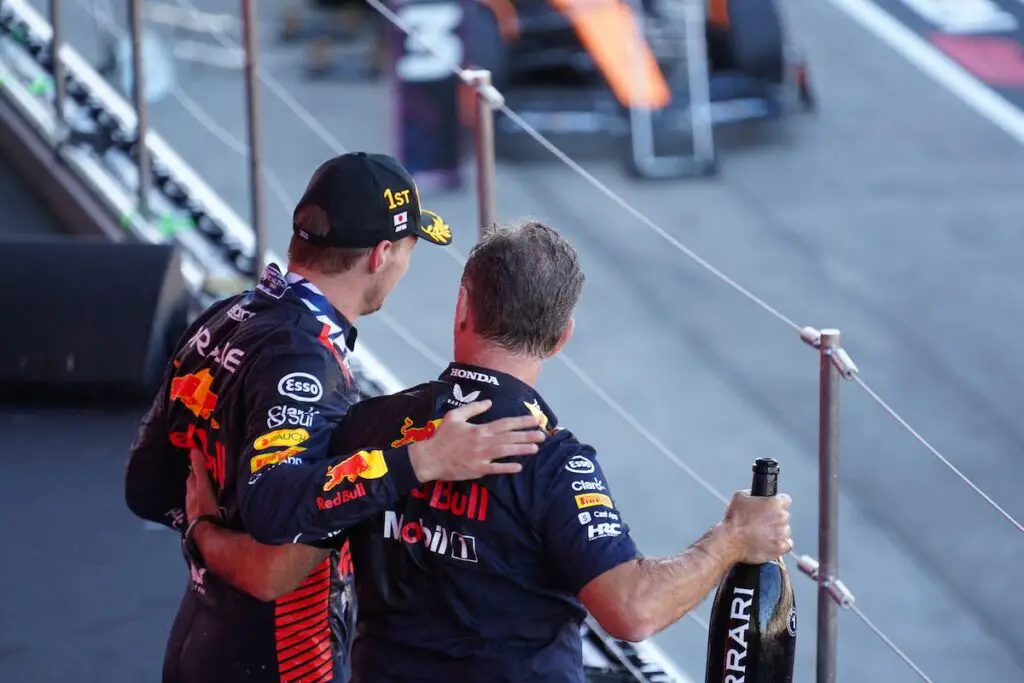
His only retirement to date at Suzuka came in 2019, when he failed to finish the race following a collision with Charles Leclerc.
Verstappen has qualified in the top five in all of the last six Suzuka races, taking his first pole position – and first front row start – at the circuit in 2022. He went on to secure back-to-back poles at the 2023 Japanese Grand Prix. Verstappen is yet to lose a place from where he has started in all six races which he has finished at Suzuka.
MAX VERSTAPPEN’S JAPANESE GRAND PRIX HISTORY
| Quali Battle | Qualified | Grid | Finished | Pos Change | |
| 2015 | LOST | 15 | 17 | 9 | 8 |
| 2016 | WON | 5 | 3 | 2 | 1 |
| 2017 | LOST | 5 | 4 | 2 | 2 |
| 2018 | WON | 3 | 3 | 3 | 0 |
| 2019 | WON | 5 | 5 | DNF | – |
| 2022 | WON | 1 | 1 | 1 | 0 |
| 2023 | WON | 1 | 1 | 1 | 0 |
🇲🇽 Sergio PEREZ
Sergio Perez has scored points at the Japanese Grand Prix on seven occasions. His retirement in the 2023 Japanese Grand Prix – his first since 2012 – ended a five-race run of consecutive points-scoring races at Suzuka for the Mexican driver. In 2022, Perez picked up his first podium finish at Suzuka, finishing as runner-up to his Red Bull team-mate.
Perez ended a four year streak of reaching Q3 at Suzuka in 2019 with his first Q1 exit at the track. He returned to Q3 in 2022, recording his best qualifying result at the Japanese Grand Prix to date with fourth place. He qualified fifth in 2023. Perez has not out-qualified his team-mate at the track since 2016.
SERGIO PEREZ’S JAPANESE GRAND PRIX HISTORY
| Quali Battle | Qualified | Grid | Finished | Pos Change | |
| 2011 | LOST | 17 | 17 | 8 | 9 |
| 2012 | LOST | 6 | 5 | DNF | – |
| 2013 | LOST | 11 | 11 | 15 | -4 |
| 2014 | WON | 12 | 11 | 10 | 1 |
| 2015 | WON | 9 | 9 | 12 | -3 |
| 2016 | WON | 7 | 5 | 7 | -2 |
| 2017 | LOST | 8 | 7 | 7 | 0 |
| 2018 | LOST | 10 | 9 | 7 | 2 |
| 2019 | LOST | 17 | 17 | 8 | 9 |
| 2022 | LOST | 4 | 4 | 2 | 2 |
| 2023 | LOST | 5 | 5 | DNF | – |
🇬🇧 Lewis HAMILTON
Lewis Hamilton has won at Suzuka four times, all in the V6 hybrid era. He won in 2014, 2015, 2017 and 2018. He finished on the podium in every Japanese Grand Prix from 2014 to 2019, finishing third in the years which he did not win.
Fifth place in 2022 was Hamilton’s first non-podium result at Suzuka since his retirement in 2013. He recorded his second consecutive top five finish at the track in the 2023 Japanese Grand Prix. His 2013 retirement is the only time he has not finished in the top five in his 13 appearances at Suzuka.
Hamilton has qualified outside of the top three only four times at Suzuka, including in each of his last three visits. He has finished in a better position than where he started in all of his last three appearances. It wasn’t until 2017 that Hamilton took his first pole at the track, which he followed up with another pole in 2018.
LEWIS HAMILTON’S JAPANESE GRAND PRIX HISTORY
| Quali Battle | Qualified | Grid | Finished | Pos Change | |
| 2009 | WON | 3 | 3 | 3 | 0 |
| 2010 | WON | 3 | 8 | 5 | 3 |
| 2011 | LOST | 3 | 3 | 5 | -2 |
| 2012 | LOST | 9 | 9 | 5 | 4 |
| 2013 | WON | 3 | 3 | DNF | – |
| 2014 | LOST | 2 | 2 | 1 | 1 |
| 2015 | LOST | 2 | 2 | 1 | 1 |
| 2016 | LOST | 2 | 2 | 3 | -1 |
| 2017 | WON | 1 | 1 | 1 | 0 |
| 2018 | WON | 1 | 1 | 1 | 0 |
| 2019 | LOST | 4 | 4 | 3 | 1 |
| 2022 | WON | 6 | 6 | 5 | 1 |
| 2023 | WON | 7 | 7 | 5 | 2 |
🇬🇧 George RUSSELL
George Russell finished 16th in the 2019 Japanese Grand Prix. He qualified 18th, ahead of his team-mate and Kevin Magnussen, who both crashed in Q1.
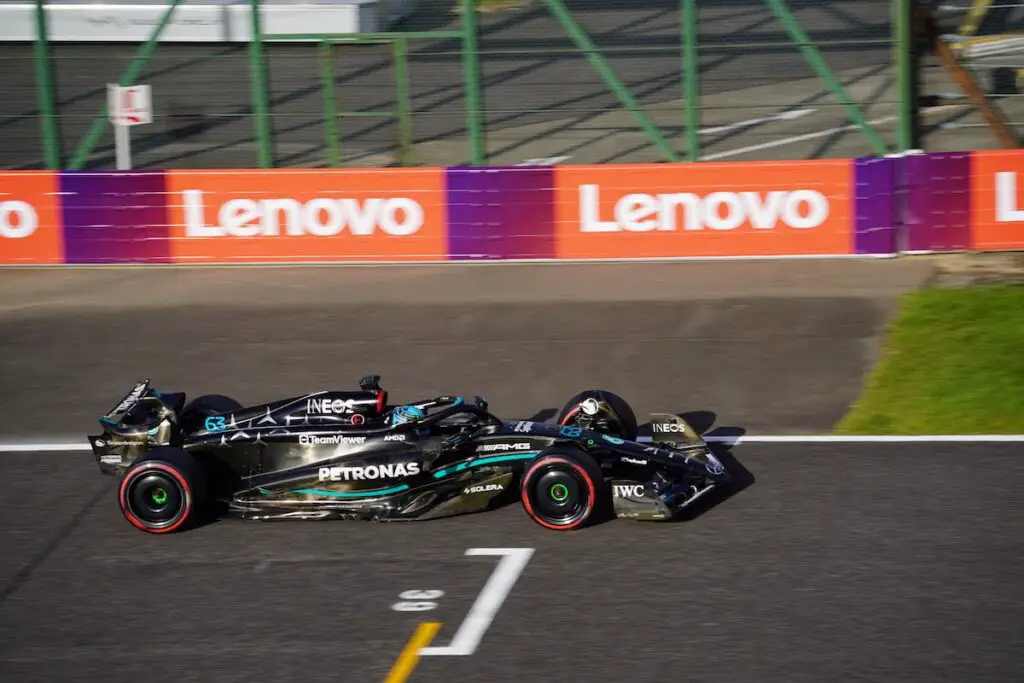
Russell failed to out-qualify Mercedes team-mate Lewis Hamilton at Suzuka in 2022, qualifying two positions behind him in eighth place. Russell finished the race in the same position as he started, picking up his first points at Suzuka.
Russell qualified eighth again in 2023, one position behind his team-mate. He went on to record his best result to date at the circuit with seventh place.
GEORGE RUSSELL’S JAPANESE GRAND PRIX HISTORY
| Quali Battle | Qualified | Grid | Finished | Pos Change | |
| 2019 | WON | 18 | 18 | 16 | 2 |
| 2022 | LOST | 8 | 8 | 8 | 0 |
| 2023 | LOST | 8 | 8 | 7 | 1 |
🇲🇨 Charles LECLERC
Charles Leclerc scored points at Suzuka for the first time in 2019. He finished sixth in 2019, following on from his DNF in the previous season. He’s finished in the top six on all of his last three visits, recording his first podium finish at Suzuka with third place in 2022 and finishing fourth last year.
2019 marked the first time Leclerc reached the final part of qualifying for the Japanese Grand Prix. He lined up on the front row of the grid, just behind his team-mate. He took another front row start at Suzuka in 2022 and qualified in the top four in 2023. He was eliminated in Q1 in 2018.
CHARLES LECLERC’S JAPANESE GRAND PRIX HISTORY
| Quali Battle | Qualified | Grid | Finished | Pos Change | |
| 2018 | WON | 11 | 11 | DNF | – |
| 2019 | LOST | 2 | 2 | 6 | -4 |
| 2022 | WON | 2 | 2 | 3 | -1 |
| 2023 | WON | 4 | 4 | 4 | 0 |
🇪🇸 Carlos SAINZ
Carlos Sainz recorded his best Japanese Grand Prix result in 2019 with fifth place for McLaren. He had previously scored twice at the track with tenth place finishes for Toro Rosso in 2015 and Renault in 2018. He went on to score again in 2023, with a sixth place finish.
Sainz has recorded two retirements at the Japanese Grand Prix, in 2017 – on his final race appearance with Toro Rosso – and in 2022. Both of those retirements were crashes on the opening lap of the race.
In 2019, Sainz reached Q3 for the first time at Suzuka, qualifying in seventh place. He has reached Q3 on both visits since, following it up with his best qualifying result to date at the circuit in 2022, with third place, and sixth in 2023. He had been eliminated in Q2 in every season prior to 2019. 2022 was the first time since 2016 that the Spaniard was out-qualified by a team-mate at the circuit.
CARLOS SAINZ’S JAPANESE GRAND PRIX HISTORY
| Quali Battle | Qualified | Grid | Finished | Pos Change | |
| 2015 | WON | 12 | 10 | 10 | 0 |
| 2016 | LOST | 14 | 14 | 17 | -3 |
| 2017 | WON | 15 | 19 | DNF | – |
| 2018 | WON | 13 | 13 | 10 | 3 |
| 2019 | WON | 7 | 7 | 5 | 2 |
| 2022 | LOST | 3 | 3 | DNF | – |
| 2023 | LOST | 6 | 6 | 6 | 0 |
🇬🇧 Lando NORRIS
Lando Norris recorded his first podium finish at Suzuka in 2023, finishing as runner-up to Max Verstappen. He recorded his best qualifying result to date at the track with third place, maintaining his 100% Q3 appearance rate at the Japanese Grand Prix.
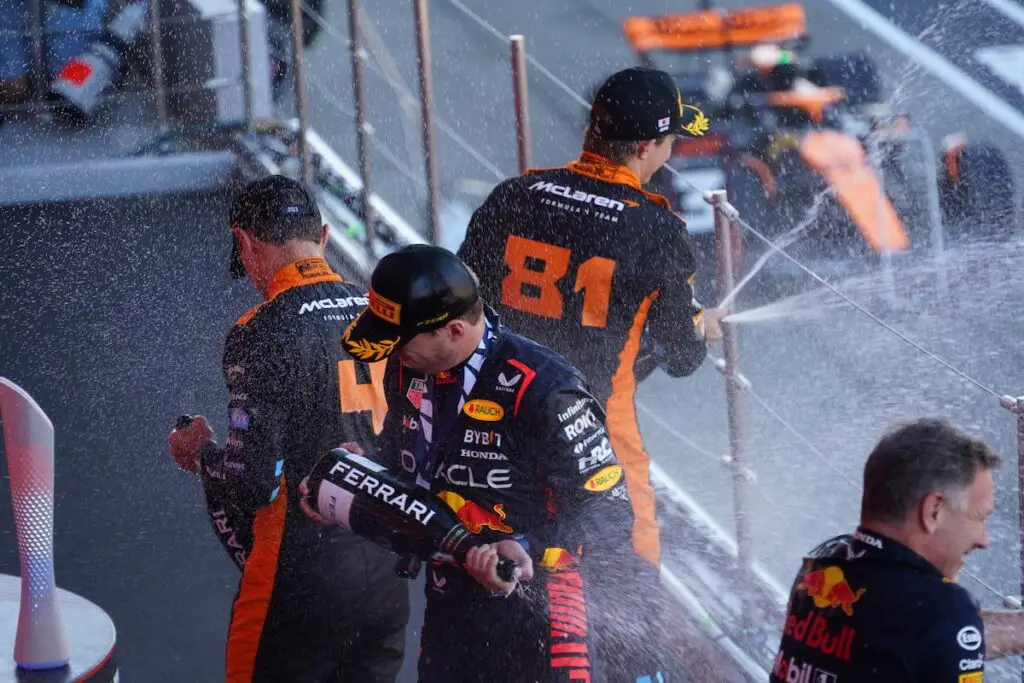
Norris finished 11th at the 2019 Japanese Grand Prix. He qualified in eighth for the race, one place behind his team-mate. Norris reached Q3 again in 2022, this time qualifying ahead of his McLaren team-mate. He scored his first point at the event, finishing in tenth place.
Norris drove at the Suzuka circuit for the first time in 2018, in Free Practice 1 for the Japanese Grand Prix with McLaren.
LANDO NORRIS’ JAPANESE GRAND PRIX HISTORY
| Quali Battle | Qualified | Grid | Finished | Pos Change | |
| 2019 | LOST | 8 | 8 | 11 | -3 |
| 2022 | WON | 10 | 10 | 10 | 0 |
| 2023 | LOST | 3 | 3 | 2 | 1 |
🇦🇺 Oscar PIASTRI
Oscar Piastri recorded the first podium result of his Formula 1 career at the 2023 Japanese Grand Prix. His third place finish came on his first appearance at Suzuka, for which he qualified on the front row – one position ahead of his McLaren team-mate.
OSCAR PIASTRI’S JAPANESE GRAND PRIX HISTORY
| Quali Battle | Qualified | Grid | Finished | Pos Change | |
| 2023 | WON | 2 | 2 | 3 | -1 |
🇪🇸 Fernando ALONSO
Fernando Alonso has recorded a single win at Suzuka in his Formula 1 career, winning the Japanese Grand Prix in 2006. With seventh place in 2022, it marked the first time that Alonso has scored at the track since 2013. He went on to score again in 2023, this time finishing eighth.
Alonso has never taken pole at Suzuka, nor has he ever lined up on the front row of the grid at the track. His best qualifying result here is fifth, which he has recorded five times. His best grid position is fourth, recorded in 2010.
From his 17 appearances, Alonso has been out-qualified by his team-mate on five occasions, with 2022 being the first time this happened since 2013. Of the 14 races which he has completed at Suzuka, 2016 is the only occasion on which he has finished the race in a worse position than where he started.
FERNANDO ALONSO’S JAPANESE GRAND PRIX HISTORY
| Quali Battle | Qualified | Grid | Finished | Pos Change | |
| 2001 | WON | 18 | 18 | 11 | 7 |
| 2003 | WON | 5 | 5 | DNF | – |
| 2004 | LOST | 11 | 11 | 5 | 6 |
| 2005 | LOST | 16 | 16 | 3 | 13 |
| 2006 | WON | 5 | 5 | 1 | 4 |
| 2009 | WON | 12 | 16 | 10 | 6 |
| 2010 | WON | 5 | 4 | 3 | 1 |
| 2011 | LOST | 5 | 5 | 2 | 3 |
| 2012 | WON | 7 | 6 | DNF | – |
| 2013 | LOST | 8 | 8 | 4 | 4 |
| 2014 | WON | 5 | 5 | DNF | – |
| 2015 | WON | 14 | 12 | 11 | 1 |
| 2016 | WON | 15 | 15 | 16 | -1 |
| 2017 | WON | 10 | 20 | 11 | 9 |
| 2018 | WON | 18 | 18 | 14 | 4 |
| 2022 | LOST | 7 | 7 | 7 | 0 |
| 2023 | WON | 10 | 10 | 8 | 2 |
🇨🇦 Lance STROLL
Lance Stroll finished ninth in the 2019 Japanese Grand Prix, making it the first time that he has scored points at Suzuka. It remains the only time he has scored points at the circuit. He failed to finish in 2017 and 2023, finished 17th in 2018 and came home 12th in the 2022 Japanese Grand Prix.
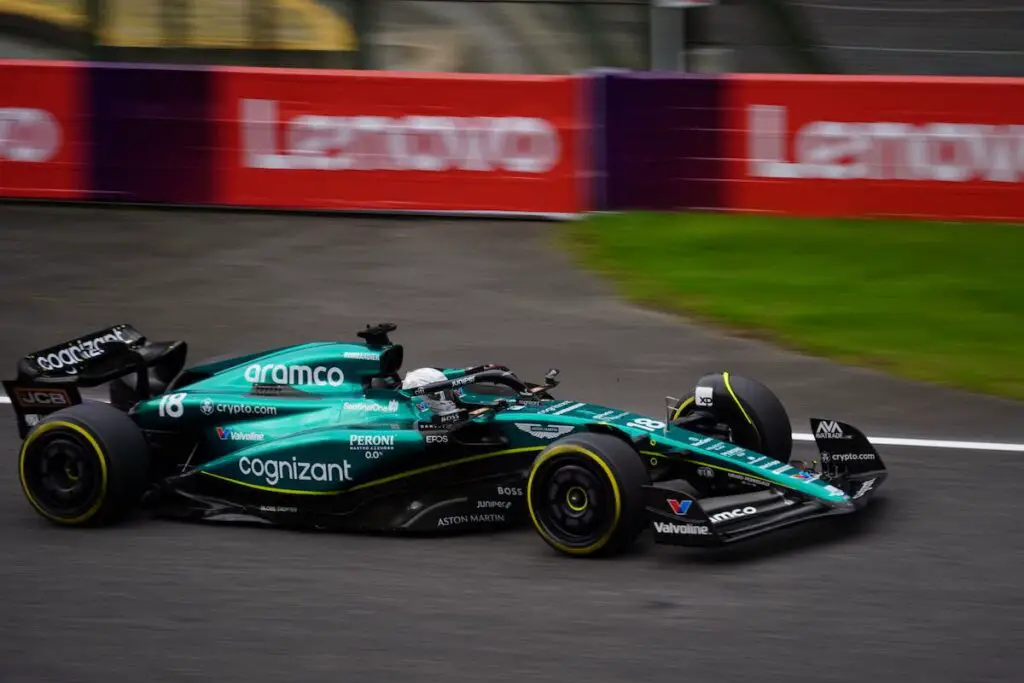
Stroll reached Q2 in 2018 and 2019 at Suzuka, recording a best qualifying position of 12th in 2019. He was eliminated in Q1 on his first appearance in 2017 and on his two most recent Suzuka appearances in 2022 and 2023.
2022 was the first time since his maiden season that Stroll was out-qualified by his team-mate at the Japanese Grand Prix, while 2019 was the first time he gained positions from where he started. He made up six places in the 2022 Japanese Grand Prix.
LANCE STROLL’S JAPANESE GRAND PRIX HISTORY
| Quali Battle | Qualified | Grid | Finished | Pos Change | |
| 2017 | LOST | 18 | 15 | DNF | – |
| 2018 | WON | 14 | 14 | 17 | -3 |
| 2019 | WON | 12 | 12 | 9 | 3 |
| 2022 | LOST | 19 | 19 | 12 | 7 |
| 2023 | LOST | 17 | 17 | DNF | – |
🇫🇷 Esteban OCON
From his five previous visits to the Japanese Grand Prix, Esteban Ocon has a 100% finish rate and has scored on all but one outing. He finished 21st in 2016 but has finished in the top nine on every appearance since. He recorded his best result at the track to date in the 2022 Japanese Grand Prix, with a fourth place finish.
2023 marked the first time that Ocon was out-qualified by a team-mate at the circuit, as well as only the second time he failed to reached Q3 at Suzuka. His best qualifying result here is fifth, recorded in 2022.
As a result of penalties for other drivers, 2022 was actually the first time Ocon started from the position in which he qualified at the Japanese Grand Prix. He also started fifth on the grid in 2017.
ESTEBAN OCON’S JAPANESE GRAND PRIX HISTORY
| Quali Battle | Qualified | Grid | Finished | Pos Change | |
| 2016 | WON | 21 | 21 | 21 | 0 |
| 2017 | WON | 7 | 7 | 6 | 1 |
| 2018 | WON | 8 | 8 | 9 | -1 |
| 2022 | WON | 5 | 5 | 4 | 1 |
| 2023 | LOST | 14 | 14 | 9 | 5 |
🇫🇷 Pierre GASLY
Pierre Gasly scored points at the Japanese Grand Prix for the first time in 2019 with a seventh place finish. Until 2023, it was his only points-scoring appearance at Suzuka. Thee Frenchman has a 100% finishing record at the track but seventh in 2019 and tenth in 2023 are his only points-scoring appearances.
Gasly reached Q3 in both 2018 and 2019, but was eliminated in Q1 in 2017 and 2022. He recorded his first Q2 exit at the track in 2023. Last year was only the second time, after 2019, that Gasly has out-qualified his team-mate at this circuit. He has gained two positions from where he has started in all of the last three Japanese Grands Prix.
Gasly raced at Suzuka in Super Formula in 2017. He finished tenth in the first round of the season. Suzuka was scheduled to hold the final two rounds of the Super Formula season too, for which Gasly missed the 2017 United States Grand Prix, but the races were cancelled due to the weather conditions.
PIERRE GASLY’S JAPANESE GRAND PRIX HISTORY
| Quali Battle | Qualified | Grid | Finished | Pos Change | |
| 2017 | LOST | 17 | 17 | 13 | 4 |
| 2018 | LOST | 7 | 7 | 11 | -4 |
| 2019 | WON | 9 | 9 | 7 | 2 |
| 2022 | LOST | 17 | PIT | 18 | 2 |
| 2023 | WON | 12 | 12 | 10 | 2 |
🇹🇭 Alex ALBON
On his first Japanese Grand Prix appearance in 2019, Alex Albon finished in fourth place, which was the best result of his career at the time. He reached the final part of qualifying, starting sixth on the grid but failing to out-qualify his team-mate.
Albon has failed to finish at Suzuka since then. In 2022, Albon did out-qualifying his team-mate, just missing out on Q2 and qualifying in 16th place. He made up three places at the start of the race but retired on the opening lap following contact with Kevin Magnussen.
Albon reached Q2 in 2023 but capped off a disappointing day for Williams, retiring from the race as a result of collision damage on Lap 27.
ALEX ALBON’S JAPANESE GRAND PRIX HISTORY
| Quali Battle | Qualified | Grid | Finished | Pos Change | |
| 2019 | LOST | 6 | 6 | 4 | 2 |
| 2022 | WON | 16 | 16 | DNF | – |
| 2023 | WON | 13 | 13 | DNF | – |
🇺🇸 Logan SARGEANT
Logan Sargeant made his first appearance at Suzuka in 2023. He crashed out in Q3 and failed to set a qualifying lap time. He started from the pit lane after changes were made to his car in parc ferme.
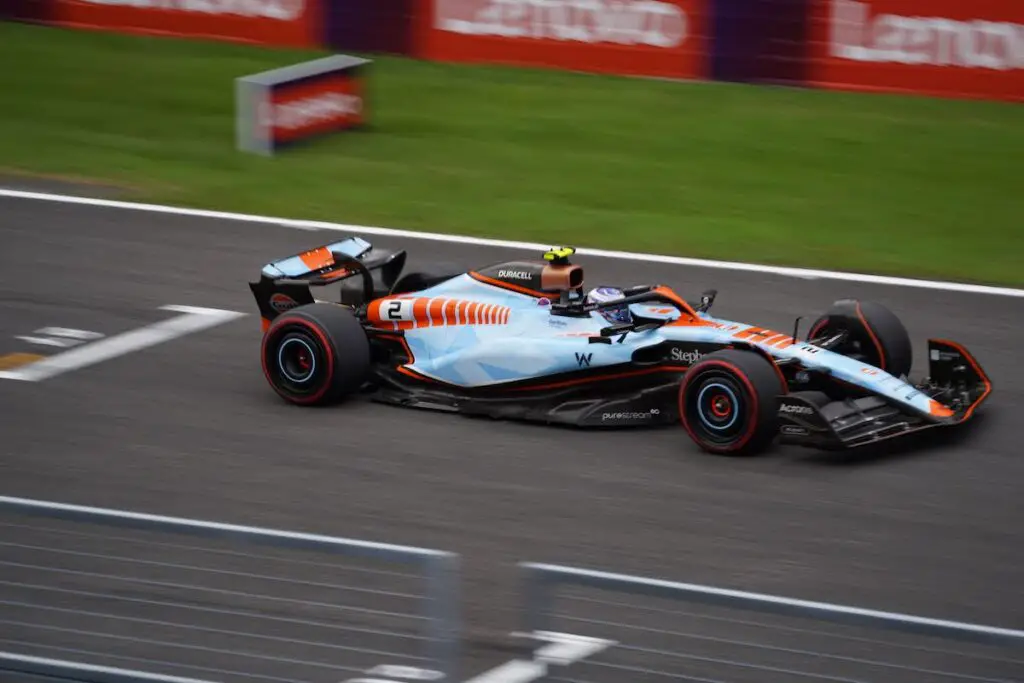
Williams were found to be in breach of using too many new replacement parts on Sargeant’s car, leading to him service a ten-second time penalty in the race. Sargeant was then handed a further five-second penalty after a collision with Valtteri Bottas which would ultimately see his race come to an early end on Lap 23.
LOGAN SARGEANT’S JAPANESE GRAND PRIX HISTORY
| Quali Battle | Qualified | Grid | Finished | Pos Change | |
| 2023 | LOST | 20 | PIT | DNF | – |
🇯🇵 Yuki TSUNODA
Yuki Tsunoda made his Japanese Grand Prix debut in 2022, becoming the first Japanese driver to take part in his home Grand Prix since Kamui Kobayashi in 2014.
He reached Q2 in 2022, out-qualifying his team-mate and setting the 13th fastest time. He finished the race in the same position as he started. He again out-qualified his team-mate in 2023, this time reaching Q3 and starting ninth on the grid. He lost three positions over the course of the race to finish 12th – his best result to date at the track.
Tsunoda previously raced at Suzuka in the F4 Japanese Championship and has had some impressive results, including winning both races in 2018.
YUKI TSUNODA’S JAPANESE GRAND PRIX HISTORY
| Quali Battle | Qualified | Grid | Finished | Pos Change | |
| 2022 | WON | 13 | 13 | 13 | 0 |
| 2023 | WON | 9 | 9 | 12 | -3 |
🇦🇺 Daniel RICCIARDO
Daniel Ricciardo has finished on the podium once at the Japanese Grand Prix, with a third place finish in 2017. The Australian has a 100% finish record at the event, but was disqualified from the 2019 race as Renault were found to be using illegal driver aids.
Ricciardo has scored five times here in total. He has not reached Q3 at the circuit since 2017, when he recorded his best qualifying result at the track with fourth place. He lined up third on the final grid.
Ricciardo has failed to out-qualify his team-mate at the track in each of his last three Suzuka appearances.
DANIEL RICCIARDO’S JAPANESE GRAND PRIX HISTORY
| Quali Battle | Qualified | Grid | Finished | Pos Change | |
| 2011 | – | 22 | 22 | 22 | 0 |
| 2012 | WON | 16 | 14 | 10 | 4 |
| 2013 | WON | 16 | 16 | 13 | 3 |
| 2014 | WON | 6 | 6 | 4 | 2 |
| 2015 | WON | 7 | 7 | 15 | -8 |
| 2016 | LOST | 6 | 4 | 6 | -2 |
| 2017 | WON | 4 | 3 | 3 | 0 |
| 2018 | LOST | 15 | 15 | 4 | 11 |
| 2019 | LOST | 16 | 16 | DSQ | – |
| 2022 | LOST | 11 | 11 | 11 | 0 |
🇫🇮 Valtteri BOTTAS
Valtteri Bottas won the Japanese Grand Prix for the first time in 2019. The Finn held a 100% finish rate at the track until 2023, when he recorded his first Suzuka retirement. Bottas has scored on six occasions at the track, scoring in six successive visits between 2014 and 2019. His second place finish in 2018 is the only time other than his 2019 Japanese Grand Prix win that Bottas has finished on the podium at Suzuka.
In 2022, Bottas finished the Japanese Grand Prix in 15th place. It was the first time he failed to score at Suzuka since his first appearance in 2013, when he finished 17th.
Bottas has never taken pole in Japan, but qualified on the front row in both 2017 and 2018. Strangely, those two years are the only two in which Bottas has been out-qualified by a team-mate at the track. Due to a grid penalty in 2017, 2018 is the only occasion that he has actually started on the front row. He recorded his first Q1 exit at Suzuka in qualifying for the 2023 Japanese Grand Prix.
VALTTERI BOTTAS’ JAPANESE GRAND PRIX HISTORY
| Quali Battle | Qualified | Grid | Finished | Pos Change | |
| 2013 | WON | 13 | 13 | 17 | -4 |
| 2014 | WON | 3 | 3 | 6 | -3 |
| 2015 | WON | 3 | 3 | 5 | -2 |
| 2016 | WON | 11 | 11 | 10 | 1 |
| 2017 | LOST | 2 | 6 | 4 | 2 |
| 2018 | LOST | 2 | 2 | 2 | 0 |
| 2019 | WON | 3 | 3 | 1 | 2 |
| 2022 | WON | 12 | 12 | 15 | -3 |
| 2023 | WON | 16 | 16 | DNF | – |
🇨🇳 ZHOU Guanyu
Zhou Guanyu has a 100% finish record from two appearances at the Japanese Grand Prix but is yet to score a point. He qualified in 14th place for the 2022 Japanese Grand Prix, two positions behind team-mate Valtteri Bottas. He finished in 16th place on his Suzuka debut.
In 2023, he finished three positions higher, in 13th, having started from the back row of the grid.
ZHOU GUANYU’S JAPANESE GRAND PRIX HISTORY
| Quali Battle | Qualified | Grid | Finished | Pos Change | |
| 2022 | LOST | 14 | 14 | 16 | -2 |
| 2023 | LOST | 19 | 19 | 13 | 6 |
🇩🇰 Kevin MAGNUSSEN
Kevin Magnussen has made seven previous appearances at the Japanese Grand Prix, finishing in the points only once. He finished eighth with Haas in 2017. His retirement in the following season is the only time that he’s failed to reach the chequered flag at the track.
2014 is the only year Magnussen has reached Q3 at Suzuka, qualifying in seventh place. That was also the only time until 2023 that he out-qualified a team-mate at the venue. He recorded his third Q1 exit at the track in 2022 and his third Q2 exit in 2023.
KEVIN MAGNUSSEN’S JAPANESE GRAND PRIX HISTORY
| Quali Battle | Qualified | Grid | Finished | Pos Change | |
| 2014 | WON | 7 | 7 | 14 | -7 |
| 2016 | LOST | 18 | 17 | 14 | 3 |
| 2017 | LOST | 13 | 12 | 8 | 4 |
| 2018 | LOST | 12 | 12 | DNF | – |
| 2019 | LOST | 19 | 19 | 15 | 4 |
| 2022 | LOST | 18 | 18 | 14 | 4 |
| 2023 | WON | 15 | 15 | 15 | 0 |
🇩🇪 Nico HULKENBERG
From ten appearances at the Japanese Grand Prix, Nico Hulkenberg has scored points five times, with a best result of sixth place in both 2013 and 2015. Of his other three races here, three resulted in retirements, while he and his team finished tenth in 2019 before being disqualified having found to be using illegal driver aids. His eighth place finish in 2018 is the last time he scored points at Suzuka. He finished only 14th last year.
2016 is the last time Hulkenberg reached Q3 at the Japanese Grand Prix. It’s one of four Q3 appearances he’s had at the track, with a best Saturday result of seventh place in 2013. 2018 and 2023 are the only seasons in which he has been eliminated in Q1 at the track.
Hulkenberg has gained at least one position from where he has started every time he has been classified in the Japanese Grand Prix.
NICO HULKENBERG’S JAPANESE GRAND PRIX HISTORY
| Quali Battle | Qualified | Grid | Finished | Pos Change | |
| 2010 | LOST | 9 | 9 | DNF | – |
| 2012 | WON | 10 | 10 | 7 | 3 |
| 2013 | WON | 7 | 7 | 6 | 1 |
| 2014 | LOST | 14 | 14 | 8 | 6 |
| 2015 | LOST | 11 | 11 | 6 | 5 |
| 2016 | LOST | 9 | 9 | 8 | 1 |
| 2017 | WON | 12 | 12 | DNF | – |
| 2018 | LOST | 16 | 16 | DNF | – |
| 2019 | WON | 15 | 15 | DSQ | – |
| 2023 | LOST | 18 | 18 | 14 | 4 |

